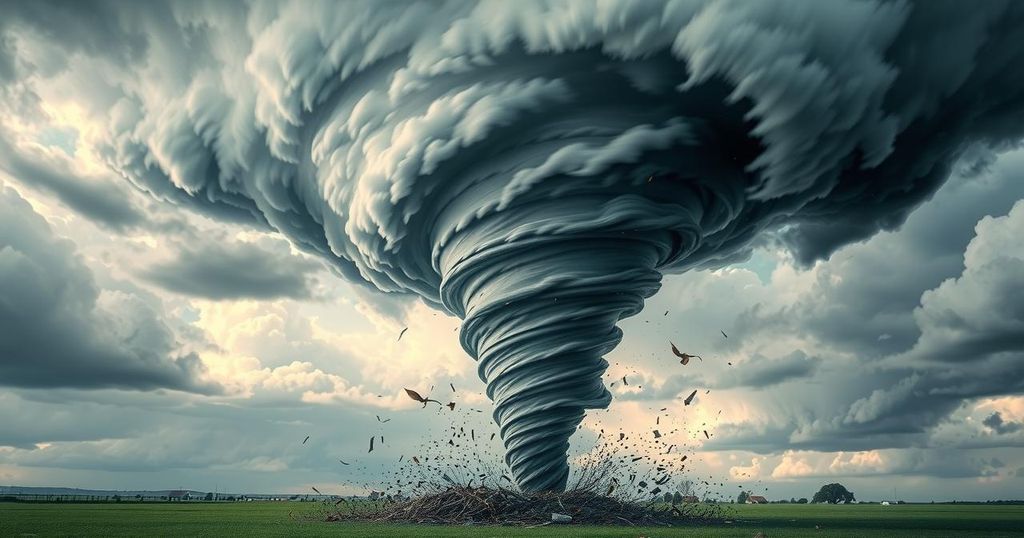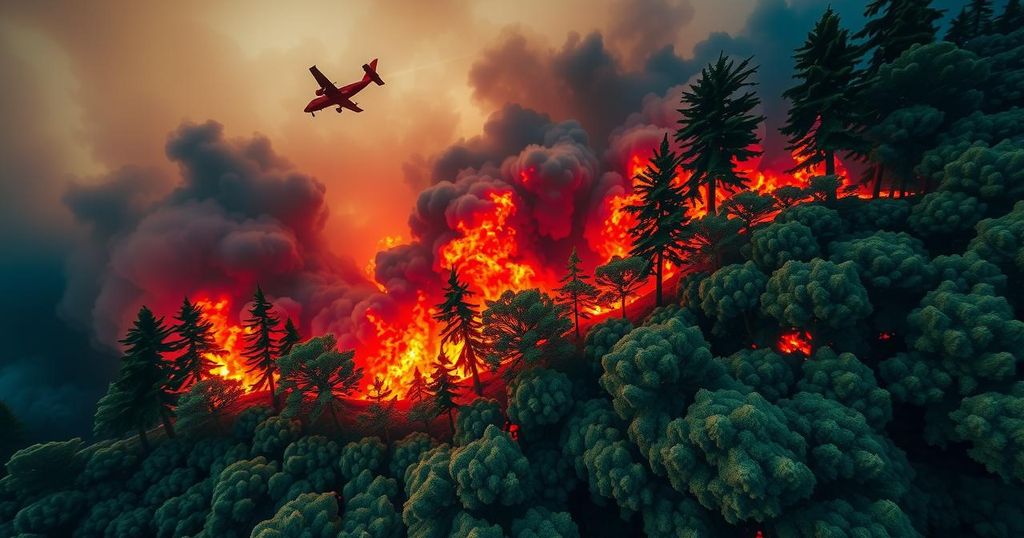Weather
World news
AFRICA, ALABAMA, AP, BANNER ROAD, DE SOTO, EL RENO, EUROPE/ASIA, GAS PRICES, GEORGIA, HALLAM, ILLINOIS, INDIANA, MISSISSIPPI, MISSOURI, NATIONAL WEATHER SERVICE, NATURAL DISASTER, NATURAL DISASTERS, NEBRASKA, NOAA, NORTH AMERICA, NWS, OKLA, OKLAHOMA, PR, PRAIRE CIRCLE, SOUTH, SOUTH AFRICA, STATE, TENNESSEE, TRI, UNITED STATES, US, VIRGINIA, WEATHER, WILDFIRES
Michael Grant
0 Comments
10 Noteworthy Facts About Tornadoes, Including the 300-MPH Wind Event
Tornadoes are highly destructive weather events, with the potential for wind speeds of up to 300 mph and significant loss of life. Peak season occurs in the spring, highlighting the importance of preparedness. Historical data reveals that tornadoes have impacted various regions, with notable events marking the deadliest and widest tornadoes in U.S. history.
Tornadoes stand as some of the most destructive natural phenomena, characterized by vast columns of air that can reach widths exceeding a mile and winds of an astonishing 300 mph. It is crucial for individuals to remain informed and prepared, especially during the peak tornado season in the spring when these powerful storms increasingly occur.
1. The Tri-State Tornado of 1925 is acknowledged as the deadliest tornado in United States history, claiming nearly 700 lives as it traversed southeastern Missouri, southern Illinois, and Indiana over a span of three hours while covering 219 miles.
2. The widest tornado ever recorded occurred on May 31, 2013, near El Reno, Oklahoma, measuring an extraordinary 2.6 miles in width and producing winds of up to 302 mph.
3. On April 27, 2011, a catastrophic outbreak resulted in 207 tornadoes across the southeastern United States, killing 319 individuals and injuring over 2,800, making it one of the deadliest single days for tornadoes in recorded history.
4. Tornadoes can exhibit varied lifespans ranging from a mere few minutes to over an hour; however, on average, they remain on the ground for approximately five minutes in total.
5. Tornadoes have been reported on every continent except Antarctica, where the rarity stems from a lack of warm, moist air necessary for their formation.
6. Despite the notoriety of Tornado Alley, severe tornadoes can occur in regions outside this area, as evidenced by the 1985 outbreak in Pennsylvania, Ohio, and New York, which resulted in 89 fatalities.
7. Researchers have identified a secondary tornado-prone region in the southern United States, known as a second Tornado Alley, which encompasses Louisiana, Mississippi, Alabama, and parts of the Carolinas, flooding moisture-rich air from the Gulf.
8. Tornadoes typically strike most frequently during the spring months, particularly March through May, with studies indicating May 25 as the day associated with the highest number of recorded tornado events throughout the years.
9. Tornadoes are most likely to form during the late afternoon to early evening hours, specifically between 4 and 9 p.m., posing particular dangers when they occur at night, as visibility is significantly diminished.
10. With an average of over 1,200 tornadoes occurring annually, the United States leads globally in tornado frequency. This high incidence is attributed to the unique geographical conditions that allow warm, moist air from the Gulf to clash with cold air from the north, creating ideal circumstances for tornado development.
In summary, tornadoes are among the most hazardous weather events, requiring vigilance and preparedness, especially during their peak season. The historical significance of events such as the Tri-State Tornado and the El Reno tornado emphasizes the destructive potential of these storms. Understanding the conditions conducive to tornado formation and their peak occurrence times is crucial for safety and awareness.
Original Source: www.accuweather.com




Post Comment